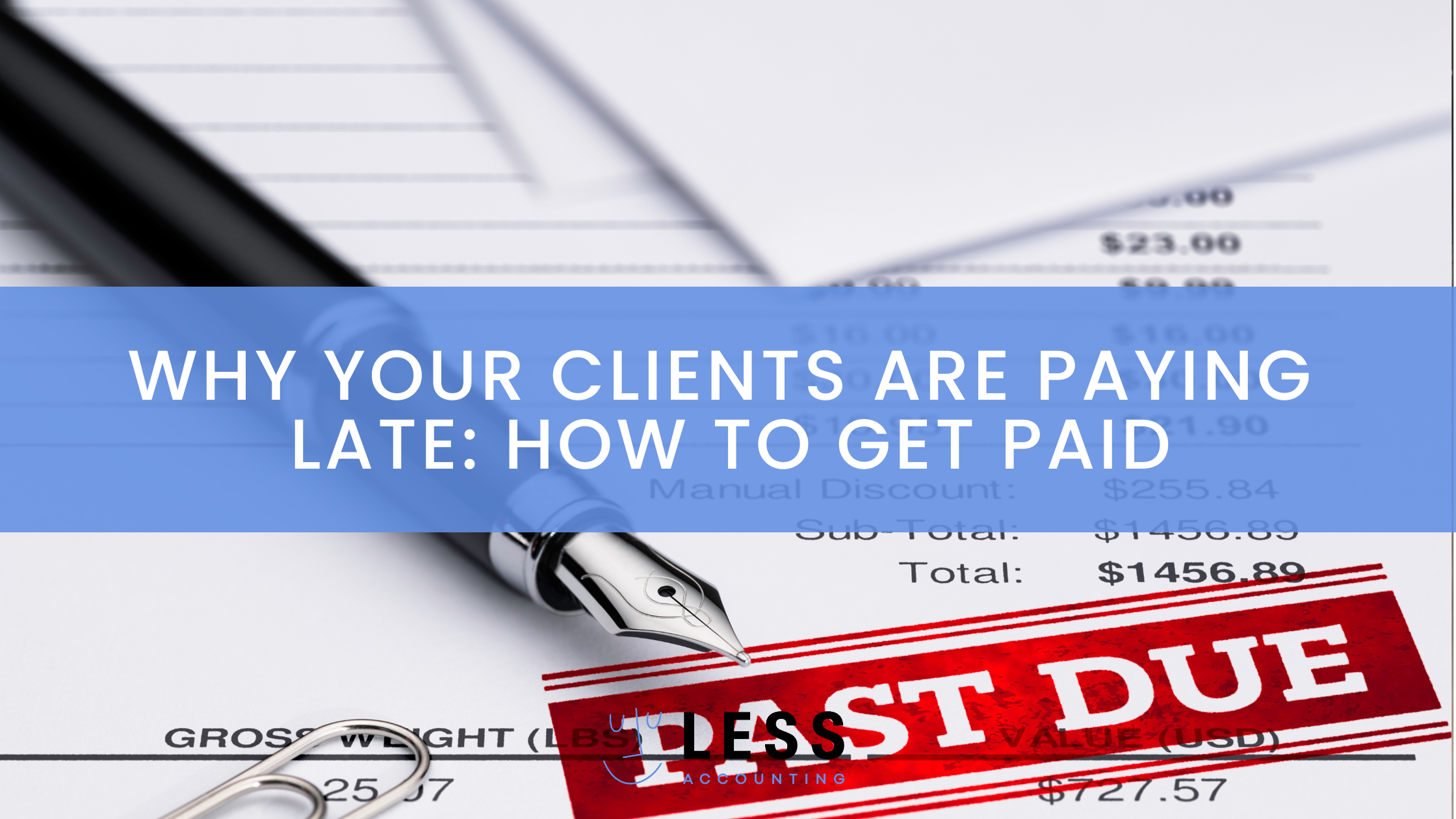©2011-2023 Less Accounting

As a business, a crucial part of success is managing your cash flow. All the amazing branding and wonderful customer service in the world won’t keep your doors open. No matter your industry–cash keeps your business functioning. A big part of managing your cash flow includes understanding how to get paid.
We’ve talked before about how your invoices can be set up to be clear and concise so that you get paid quickly, and about how outstanding invoices “ones that are sent, but not yet late” can be difficult to collect.
Start by taking a look at why your clients are paying late in the first place.
Cash and checks are not as common forms of payment as they once were. Business owners, clients, and customers are most likely to opt for electronic payments. There are many ways to easily accept electronic payments, generally for very small fees, which will make it easier for your clients to pay you. You can set up a business PayPal account, for example.
Ideally, you’d be sending electronic invoices, with a “click here to pay” link in an obvious location, encouraging customers to pay right away.
Are your invoices due upon receipt, net-15, net-30, or net-90? The terms you choose communicate different priorities to your customers.
When you are paying your own bills at home, don’t you prioritize those which are due immediately, rather than those which are due a month or more from now? Many businesses operate the same way. When you are setting up your contract with your client, set your terms as close to due upon receipt as you can. If you are required to set them out longer, consider offering a discount if the client pays more quickly.
Do you consistently notice that the same customer is always paying at the very end of the invoice term, or that the same client constantly has a number of overdue invoices? It could be that their accounting is subpar, but it could also be that they’re having their own cash flow issues.
If this is the problem, you really only have two solutions. You can offer incentives and discounts for them making you one of the first clients that they pay, or you can choose not to accept their business moving forward. It’s hard to let go of clients who are constantly late paying, but do eventually pay. At the same time, if you can replace them with clients who do pay on time, your business will function more smoothly going forward.
Some large businesses have specific times when they pay out all of their outstanding invoices. If this is the case for your client, ask your contact for information on when is the best time to submit your invoice to ensure quick payment.

Getting paid for the work you’ve done can be one of the most frustrating parts of owning a business. There are strategies you can use to convince your clients to prioritize paying you, such as:
But the easiest way to manage your cash flow (if you can manage it) will always be that you get paid for the work you do when you do it. By advising customers of your due upon receipt terms up front, you may be able to choose customers who can pay immediately. You can then build your business with customers like these until you have enough cash in reserve to manage the bigger contracts that sometimes need 30, 60, or 90 days to pay out.
Understanding why your clients are paying late can help you come up with strategies to help avoid future holdups in your cash flow. For more help with streamlining your invoicing, try Less Accounting for free for 30 days.